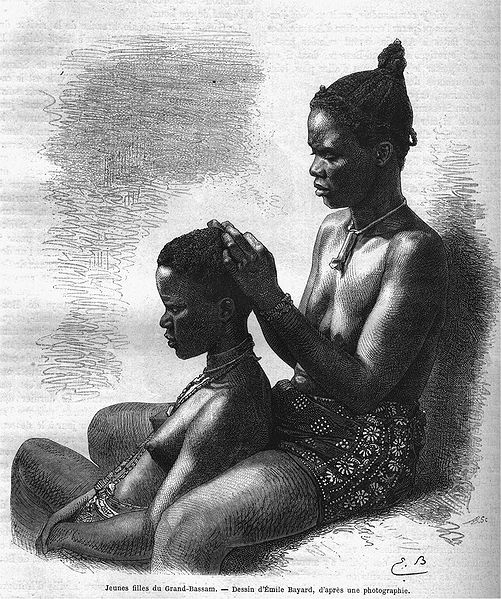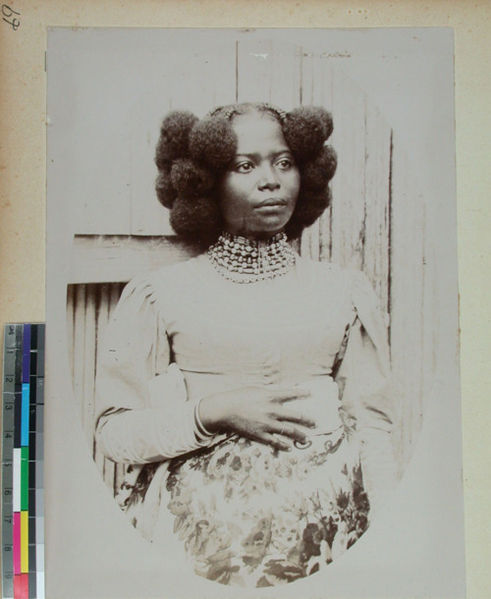Afro-textured, kinky, nappy, coily, curly, etc. are various descriptions to depict the texture and structure of African American hair. The history behind all the elaborate designs and hairstyles originated in different ethnic regions in Africa.
Socially, hair grooming played a significant part in status and identity in tribes. Therefore, it was very important for the head female in each family to be very skilled in creating the appropriate styles and teaching this craft to their daughters. It was considered a big deal to wear your hair neat and groomed, and hair worn out loosely was looked upon as someone mentally unstable, filthy, or in mourning.

Young girls from Grand-Bassam - Photo Source: CI-GdBassam-Jeunes Filles - http://en.wikipedia.org/wiki/File:CI-GdBassam-Jeunes_Filles.jpg
In essence, hair grooming was a way to identify someone’s social status based on ethnicity, social rank, age, marital status, wealth, fertility, manhood, religion, and death. The process of styling and preparing the hair could last hours or days and was a very intimate and spiritual part of their wellness. Like today, women used this time of beautifying as an opportunity to create meaningful bonds and socialize between family and friends.
There were various ways to style the hair ie. twisting, braiding, cotton or wool thread weaving, adding animal fat and ocher, or adding mud and clay. The diverse, elaborate styles and experiments on the hair began to diminish during the height of the slave trade and depleted completely when the slaves were settled in America.
Read about African American hairstyle history and African American Hair History.
Resources: “Afro-textured hair” – http://en.wikipedia.org/wiki/Afro-textured_hair, “Maasai people”- http://en.wikipedia.org/wiki/Maasai_people, “Mud Hairstyling” – http://www.fashionencyclopedia.com/fashion_costume_culture/Early-Cultures-African/Mud-Hairstyling.html



